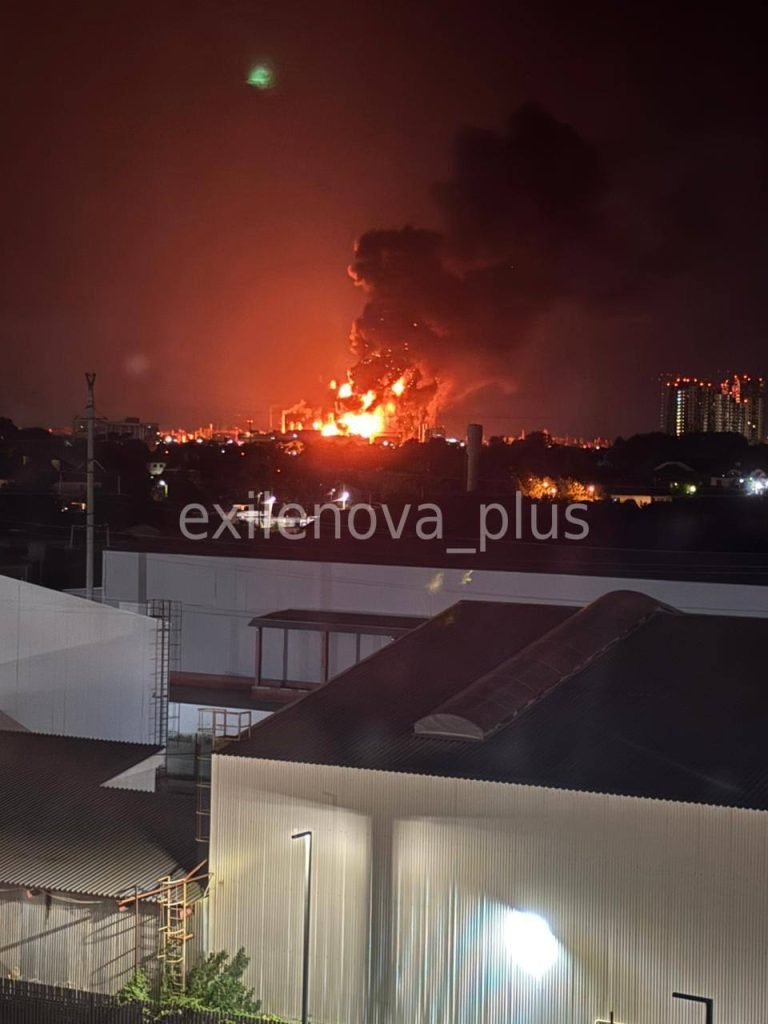Ukrainian Drone Strikes Target Russian Oil Refineries: A Deep Dive into Recent Attacks
Editor’s note: This article has been updated to reflect comments by Robert "Madyar" Brovdi, the commander of Ukraine’s Unmanned Systems Forces, alongside reporting on the drone attack on the Syzran Oil Refinery in Samara Oblast.
In the early hours of August 30, Ukrainian drones launched strategic strikes on two significant oil refineries located in Russia’s Krasnodar Krai and Samara Oblast. This development was confirmed by Robert "Madyar" Brovdi, the commander of Ukraine’s Unmanned Systems Forces. Such drone actions are part of a broader military strategy employed by Kyiv to target critical infrastructure in Russia, leading to considerable implications for both countries.
Reports and Reactions
Russian Telegram channels began buzzing with reports of explosions at approximately 2:30 a.m. local time in Krasnodar Krai, alarming local residents who observed drones flying overhead. Eyewitness footage circulated on social media captured large blazes emerging from both oil refineries, underscoring the intensity of the strikes. However, the full extent of the damage inflicted remains unclear, with authorities assessing the aftermath.
Brovdi stated that the 14th regiment of the Unmanned Systems Forces, working in coordination with Special Operations Forces, conducted the attacks, targeting both the Krasnodar Oil Refinery and the Syzran Oil Refinery. Notably, these installations have previously been on Kyiv’s radar, with Syzran being hit just a couple of weeks earlier on August 15.
Strategic Significance of the Attacks
The ongoing conflict has seen Ukraine increasingly focus on disrupting Russia’s fossil fuel infrastructure. Since the outset of Russia’s large-scale invasion in February 2022, Kyiv has enacted a tactical approach to undermine the Kremlin’s ability to fund its military endeavors. The refineries in question are vital players in this economic game; they account for approximately 4.1% of Russia’s total oil production and provide essential fuel types including aviation fuel, which directly benefits the Russian Armed Forces.
Impact on Russian Oil Operations
According to reporting by Reuters, Ukraine struck ten refineries throughout August alone, effectively shutting down operations that represent an alarming 17% of Russia’s national oil refining capacity—around 1.1 million barrels per day. The repercussions of these assaults extend beyond immediate damage; they threaten the overall stability of Russia’s oil supply chain and generate logistical challenges that impede military operations.
Wider Context of Drone Warfare
The regions of Krasnodar Krai and Samara Oblast are situated considerably distanced from Ukraine’s frontline, marking a shift towards targeting deeper into Russian territory. The increasing frequency of these drone strikes signals a sophisticated capability and intent from Ukrainian forces to project power beyond traditional conflict zones. As these regions remain relatively untouched by the immediate blast of ground combat, they are now bearing the brunt of this aerial warfare.
Summary of Operational Objectives
These targeted strikes serve dual objectives for Ukraine: weakening Russian military logistics through economic disruption while also demonstrating its aerial capabilities. The proximity of these refineries to occupied Crimea and the strategic waterway of the Kerch Strait compounds their significance. By focusing on such critical assets, Ukraine attempts to alter the balance of power in the ongoing conflict.
Continuing Developments
The full ramifications of these assaults are still unfolding as both sides reassess their military strategies. The attacks on Russian infrastructure not only highlight Ukraine’s current operational focus but also its persistent efforts to adapt in a rapidly evolving battlefield landscape.
As the situation develops, further updates will be provided, helping to illuminate the ongoing conflict’s broader implications on regional security and international relations.

